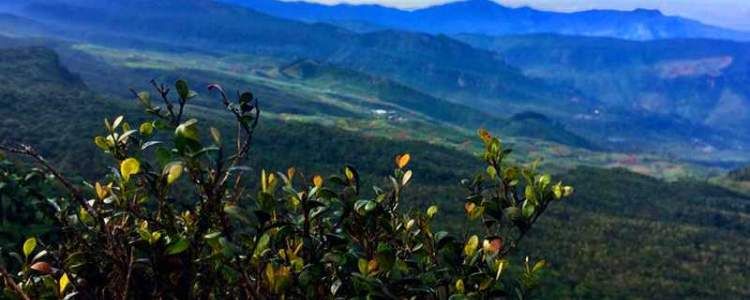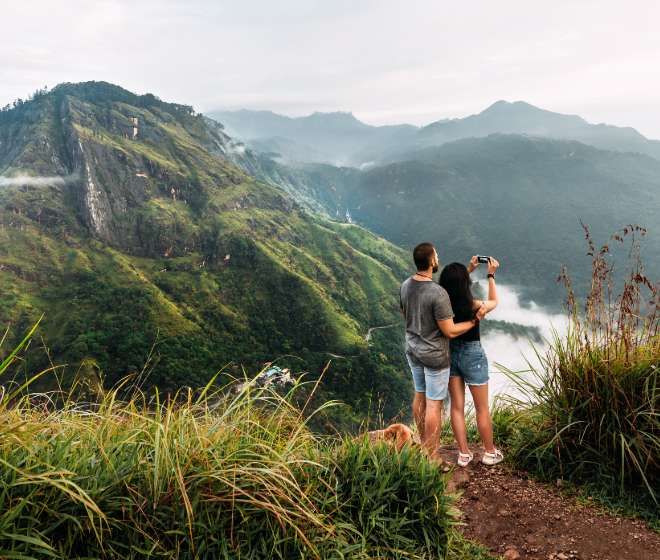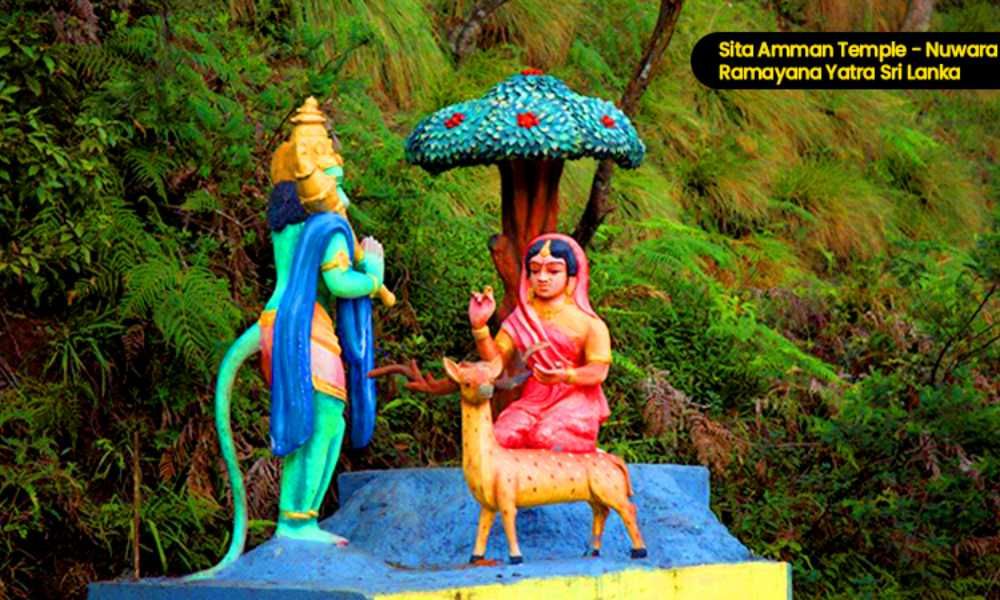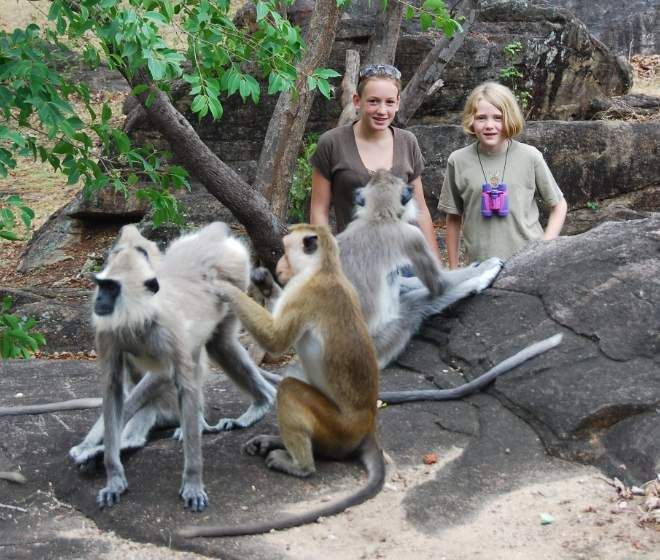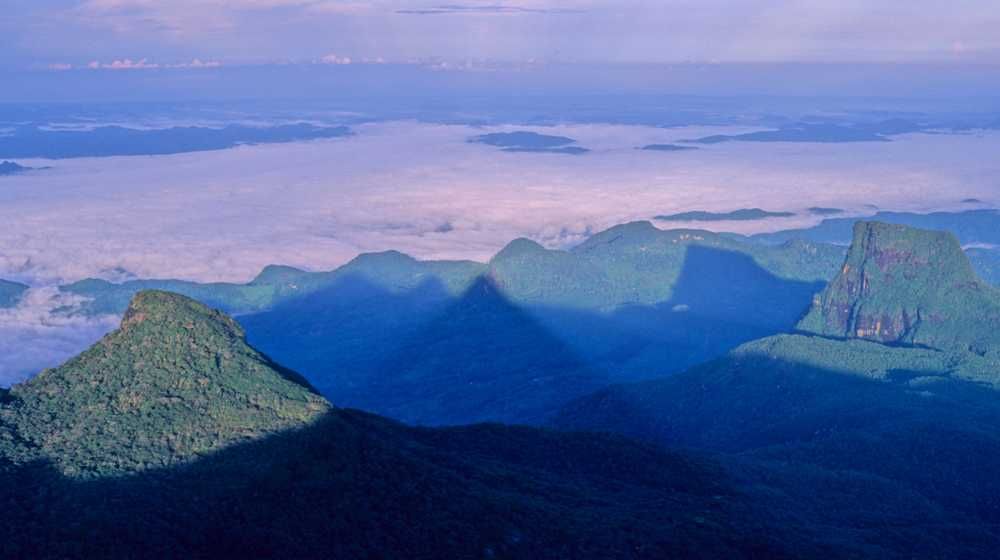
Central Highlands of Sri Lanka
Central highlands of Sri Lanka is a protected land area that has full of natural beauty which is located in the south central part of Sri Lanka.
The Peak Wilderness Protected Area, The Horton Plains National Park and the Knuckles Conservation Forest are the main three areas which falls under this property, where the land rises to 8,000 FT above the mean sea level. Central highlands of Sri Lanka is a home to extraordinary range of flora and fauna including several endangered species such as the western purple faced Langur, the Horton Plains Slender Loris and the Sri Lankan Leopard which is another reason why UNESCO announced it as a World Heritage Site.
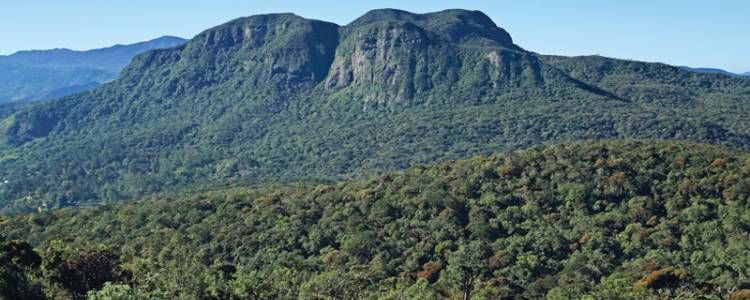
Biodiversity of Central Highlands
Central Highlands provides a microcosm of the entire variety of climatic conditions in Sri Lanka from extreme wet to nearly arid. Highland forest areas are extremely wet with an average annual rainfall of 5000mm while lowland areas are much drier with less than 2500mm average annual rainfall. Some areas have ground frost during January to March. The area is vulnerable to strong winds. The tropical lowland semi evergreen vegetation type is seen in the valleys and foothills. The unique grassland called Pitawalapatana is a Patana grassland with a great aesthetic appeal. The grass cover is up to 10 meters tall and occupies an area of about 10ha of a gently sloping rock slab covered with just a 10-15cm deep soil layer. Scrublands with thorny or prickly shrubs around two meters in height grown as an impregnable thicket occur around present and past settlements.
Central Highland range provides shelter to 128 bird species, 20 amphibian species, 60 butterfly species, 17 mollusk species, 31 mammal species, 53 reptile species, and 15 fish species. Among the total vertebrate animals recorded in Sri Lanka, five endemic species consisting of 3 freshwater fish species (Phillips Garra, Blotched filamented Barb, and Martenstyn Barb), one amphibian (Kirthisingha’s Rock Frog) and one lizard (Leaf nose lizard) are confined solely to the Central Highlands.
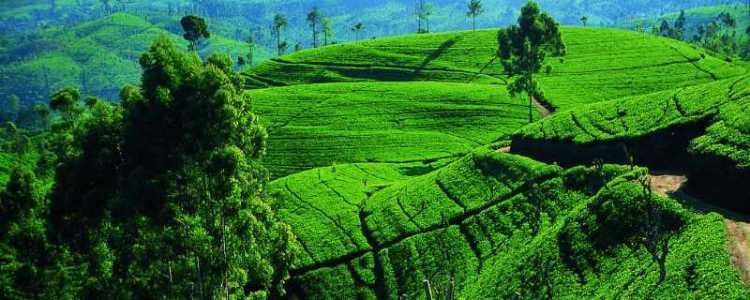
Central Highlands as an UNESCO World Heritage
The Central Highlands of Sri Lanka were labelled as a World Heritage Site in 2010 in recognition of the site’s values within one of the world’s richest attentions of biodiversity. The Central Highlands of Sri Lanka was inscribed as a World Heritage after the World Heritage Committee meeting held in Brasilia during in August 2010. The site conserves the largest remaining stands of sub montane and montane rainforest in Sri Lanka and protects the habitat of an assemblage of associated species displaying extraordinary levels of endemism, many of which are site endemic.
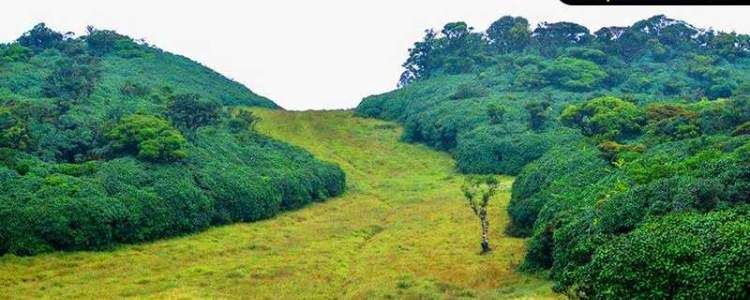
What to see in Central Highlands
The Knuckles, locally called as Dumbara hills meaning misty mountains, spans the Kandy and Matale Districts covering an area of approximately 21000ha. The Knuckles massif is separated from the Central Highlands by a deeply incised valley referred to as the Dumbara Valley. It bears the pride of 35 peaks above 1000 m above sea level, 20 over 1500 m, and 2 peaks over 2000 m. The area above 1500 m in the Knuckles Range was declared as a climatic Reserve in 1873 and same declared as a Conservation Forest in April 2000 and subsequently, as a National Man and Biosphere Reserve.
Horton Plains National Park is a beautiful highland plateau situated at an elevation of 2100 -2300m above sea level and is covered by montane grassland and cloud forest which is also rich in biodiversity and many species found here are endemic to the region. The weather at the plains changes considerably during the day with temperatures as high as 27 degrees centigrade during the day and dipping as low as 5 degrees centigrade in the evenings and night with thick mist formation and regular rainfall throughout the year. The World’s End, a 700m vertical drop which gives a tremendous view of the valley below and also the beautiful cascades of the Baker’s waterfall makes it even more interest for trekking and bird watching.
Peak Wilderness sanctuary is a natural reserve in Sri Lanka which is the third largest from the 50 sanctuaries in the country. It spreads over a land of 224 square kilometers around the Sri Pada Mountain. The striking pyramid of Adam’s Peak which stands 7360 feet in height was identified by Buddhists as the Buddha’s footprint, by Hindus as that of Shiva, and by Muslims as Adam’s.
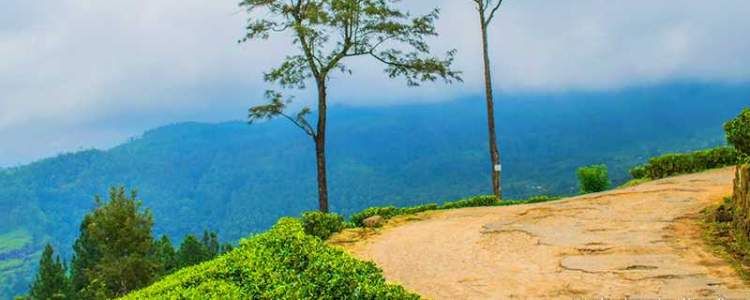
Not to miss in Central Highlands
- Adventure trek in Knuckles Mountain Range
- Explore Horton Plains National Park
- Climb Adams Peak
- Camping in chilling Knuckles Mountain
- Visit Reverse Turn in Knuckles
- The walk to World’s End & Baker’s Falls
- Hike to glory mountains in Central Highlands
- Ella attractions
- Walk through Tea Estate and visit teat production at running tea factory
- Visit water falls of Nuwara Eliya
